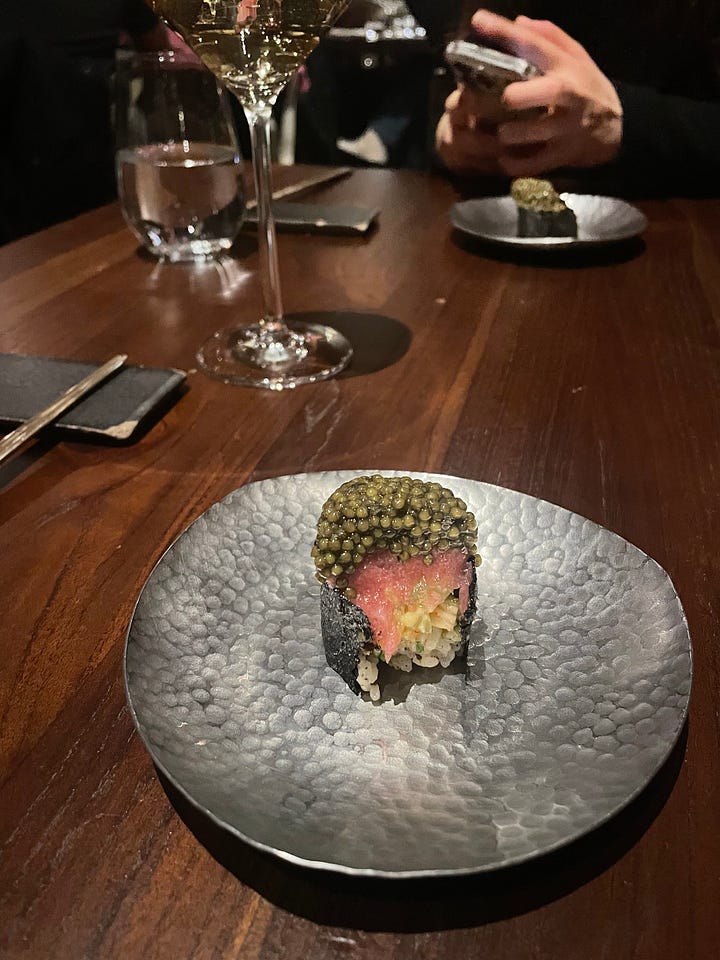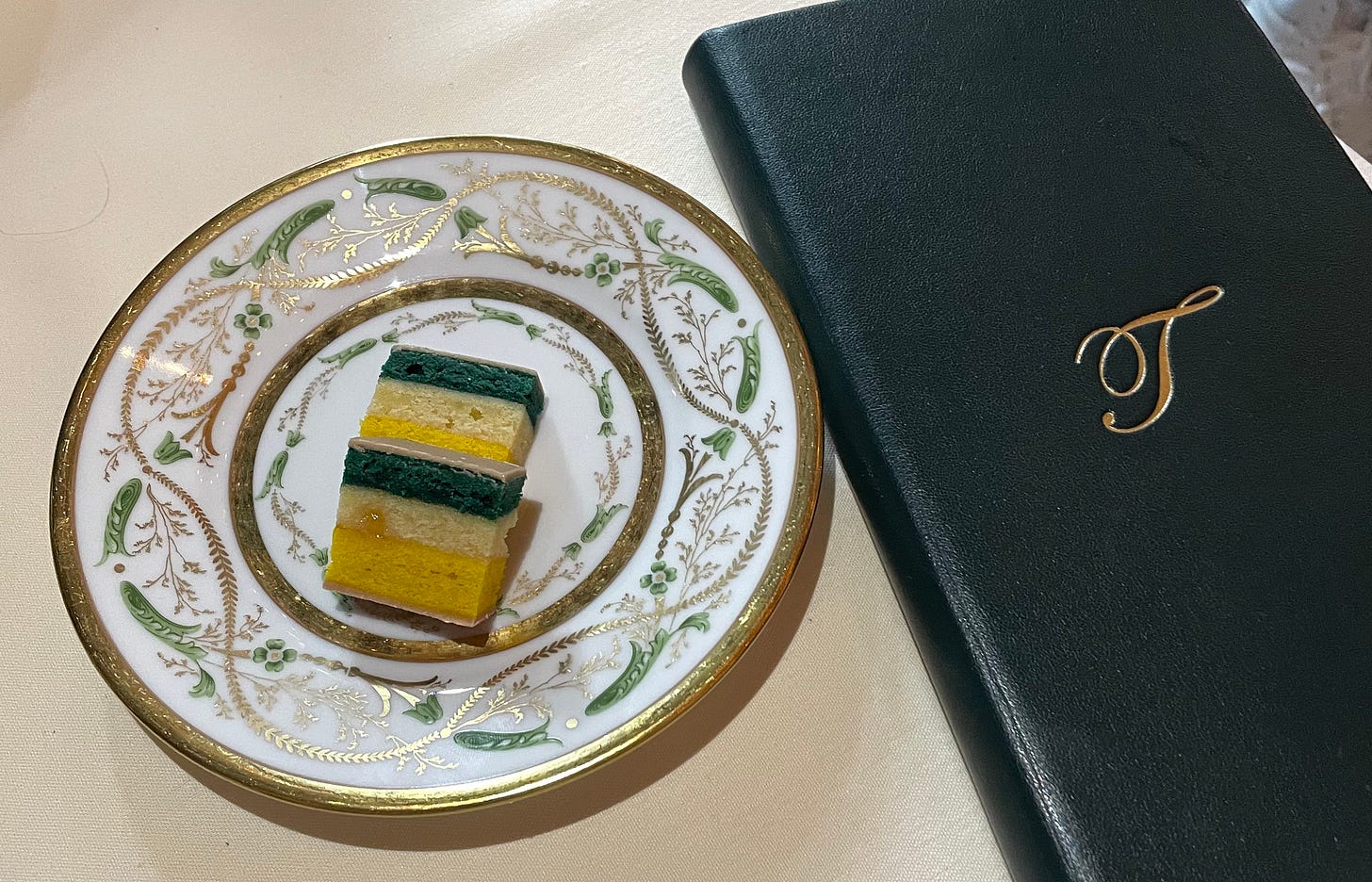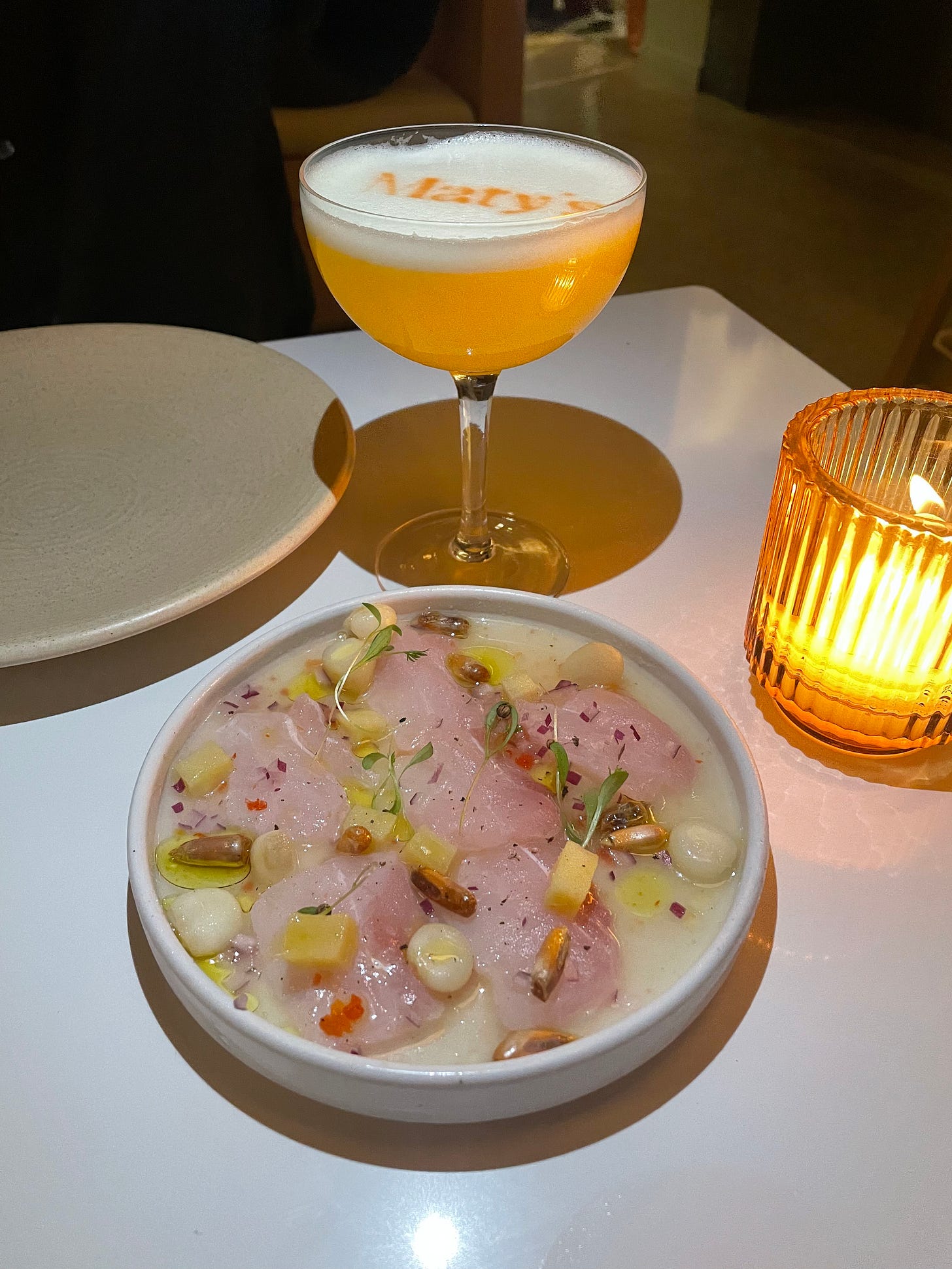There’s been the long-time emphases on Michelin stars…. I’m still guilty of chasing Resy times just to try the latest Michelin-starred restaurant, and the term Michelin has become synonymous with the fine dining industry, or, at least, a high marker of legitimacy in the genre. Similarly, (though I argue, less pretentiously,) the James Beard Foundation awards provide a significant accolade for stateside restaurants that bring flocks of critics and diners to nominated restaurants or eateries with nominated chefs.


The James Beard Award Semifinalists were announced a couple of weeks ago (and the Grammys earlier this week), a series of comprehensive lists of restaurateurs, chefs, bakers/pastry chefs, hospitality groups, and bars. With the sheer number of semifinalists and JBF’s national scope, there is a lot more diversity within James Beard finalists than restaurants on New York’s Michelin Guide. That being said, the James Beard Award is still only for a certain type of restaurant: the ones with owners both knowledgeable and literate enough to (1) apply and (2) write a good impact statement. This means that there is a lot of overlap between members of the Michelin Guide and JB Semifinalists, as both require applications and a network in the food world (although I’ll mention later, Michelin is on a whole other level).
Looking at the requirements for JB’s “Impact Statement,” it’s a value-focused written or spoken statement that calls for emphases on JBF’s values of “equity, transparency, respect, integrity, and community,” which are important but aside from the food. I assume that this move towards a sort of values-focused award process is due to backlash from some of the foundation’s past award seasons, like a few years ago when a nominated chef was accused of sexual harassment allegations, and the James Beard Foundation was fiercely criticized for setting aside values in their award giving process. It seems like they’re focusing a lot more energy on inclusion and investigating possible cases of sexual harassment, though there is plausible criticism that this detracts from or rather shifts their role as a restaurant/chef/food media awards foundation.
Something important to note about these rewards is the buy-in. James Beard only has a buy-in for the food media awards (which they also state can be waived), but Michelin overall is much less transparent in their processes to the outside world. I found this one resource that somewhat explains the inspection process, but my conversations with fine dining insiders yield different results. The Michelin website states that Michelin inspectors are to maintain complete anonymity. However, a trusted source has stated that everyone in each city familiar with the Michelin Guide knows who the inspectors are and can prepare accordingly from their names in the reservation slots (and thus treat the inspectors like VIPs). There is also known to be a buy-in/application fee for a restaurant to be Michelin inspected, but unlike JBF, Michelin does not reveal an amount or even a clear way to apply for a star, bib gourmand, or slot on their guide. There’s definitely a different vibe to Michelin; stars are synonymous with the echelons of fine dining. I would argue that the Bib Gourmand is more similar to the James Beard Best New Restaurants, though the Bib Gourmand harps more on value (in order to create a category separate from that for the stars).
There’s also the World’s 50 Best, a UK-based award/accolade that creates 50 Best lists for restaurants and bars on both global and continental/national scales. Their website has a pretty extensive explanation of their voting system, with the makeup of the body, or their “Academy,” and the rules of winning, including retiring previously awarded restaurants. I personally know the least about this list because it’s arguably the most competitive (50 slots in the world for a restaurant/bar versus dozens of national accolades from JBF and a relatively unlimited number of potential winners with the Michelin in its designated cities).
Anyways, before this becomes a fifteen-minute rant about culinary awards, I’ll give you my own experiences with them. As mentioned, I still chase the Michelin stars from time to time. Take my trip to Torrisi last week, for example; despite my boyfriend telling me its overhyped, I had to go see for myself after weeks and weeks of seeing rave reviews of the Tortellini Pomodoro. More on this later, but I HATED Torrisi, from the food to the service. That being said, Torrisi’s positioning as a Major Food Group restaurant was likely the main factor playing into its 2023 Michelin star. (More suspiciously, I suspect that (1) Torrisi could have been a condolence star that Michelin gave because MFG lost its star with Carbone, (2) MFG has a ton of money and probably good relationships with Michelin, and (3) the Torrisi Michelin inspectors a got very, very good dining experience, in part because of MFG’s long-standing relationship with and knowledge of Michelin and its NYC inspectors).
I see the elitist and Western-dominated role of the Michelin Guide even in some of my favorite restaurants in the city. For example, my favorite Thai restaurant in the city is Somtum Der (specifically the East Village location, though they also have an outpost in Red Hook), which is a popular joint for somtum (papaya salad) from Bangkok that opened stateside as well as in other Asian cities (Saigon and Tokyo). Somtum Der won a Michelin star in New York back in 2019, but it hasn’t maintained one since. I was extremely surprised to learn the restaurant had even won a star in the first place; one look at the menu and the ambience of the restaurant and most would have expected the star to be a Bib Gourmand instead. Though I don’t have contact with the Michelin inspectors, I suspect that the element of price point and ~vibes~ of Somtum Der have something to do with its inability to retain its star, as most other Michelin-starred chef’s tasting menu restaurants and pricier joints have kept their star(s). In this way, the Michelin Guide’s ratings and inclusion of certain restaurants are not holistically representative of any city’s food scene; rather, it’s a relic of the Escoffier and El Bulli (namely molecular gastronomic) styles of cooking and innovation.
Despite the elitist nature of the awards, I think there is a notable significance in the high caliber that many Michelin-starred restaurants carry with them (after all, there’s a valid reason the Escoffier method and molecular gastronomy are still present and in high demand today). For example, I’m headed to drinks tonight at Sip & Guzzle but am planning on saving stomach room for some bites because their head chef was previously the executive chef at Alinea in Chicago. Similarly, I visited Claud, one of my now-favourite restaurants in the city, for the first time because of all the buzz it was getting from their Momofuku Ko alumni lineup. Working a front-of-house job now at a Michelin-starred restaurant, I see the intensity in the kitchens, attention to detail, and strict working environments that cultivate a high standard of food that is guaranteed from most Michelin-starred kitchens.
Similarly, the James Beard Foundation semifinalists and nominations are not necessarily representative of the best food in the US; there are good and bad apples on its roster. Within my social circle, we’ve had both fantastic and disappointing experiences dining at restaurants with JBF accolades. Take, for example, LittleMAD, a restaurant birthed by Chef Sol Han, a Korean American Queens native. Chef Han was a semifinalist last year for the James Beard Best New Chef Category, serving an innovative take on Korean food through his chef’s tasting menu. Across the board, my friends who have partaken in LittleMAD’s fare have said that while innovation and creativity run deep throughout the tasting menu, the meal itself was not the most delicious they’ve had and slightly lackluster in quality, though the quantity of food was plentiful. In this way, JBF’s judging criteria are more holistic than food, which I think is incredibly important in culinary awards but a good reminder not to put these accolades on a pedestal when deciding where to grab dinner.
On the flip side, back in October I visited Miami with my boyfriend, and we had dinner at Maty’s. Chef Valerie Chang of the restaurant was a semifinalist for JBF’s 2023 Best Chef in the southern region, and we thought this meal was well-deserving of the James Beard clout. All of our dishes across the board, from the ceviche to the oxtail saltado, as well as the craft cocktails, were delicious and comparable to some of the best restaurants in New York.
I’m not saying that Chef Chang deserves the recognition more than Chef Han; where Chef Chang hit the mark on flavour and consistency Chef Han comes up on par with his creativity and playful fine dining food. Rather, what I’m saying is that the Michelin Guide and James Beard Awards should not be used as a primary deciding factor for all special occasion dinners. Some Michelin-starred restaurants, like Le Bernadin, have a decades long legacy and have been pioneers in the culinary industry, warranting a visit or a spot on your dining bucket list. Chasing stars and Best Chefs, however, can detract from finding some of the best bites in every city. As much as I loved my dinner at Jua, I also adore my favorite place for Nepali Thali in Jackson Heights, two incomparable but equally special dining experiences, the latter of which I found from word of mouth rather than media presence.
As a Korean American, it’s wonderful to see the rise of the Korean tasting menu restaurant in New York both within and around the Michelin world. In some ways though, I think continuing to give so many extra brownie points to these restaurants only further legitimizes the Eurocentric, western mindset of the culinary world, as almost all of these restaurants follow the El Bulli style chef’s tasting menu and apply French technique to Korean ingredients and flavour combinations. I don’t necessarily want to end this piece off on a concrete thesis; as you can probably tell, I’m as conflicted as this essay is contradictory. However, I do hope that this gives some insight into the flaws of food awards and the importance of personal preference. Let’s put it this way: While I hate Taylor Swift’s music and David Chang’s food, the influence of both of these pop culture icons is undeniable in either industry.
Thanks for allowing me to tickle our brains this week! Catch you all again soon.
With Love,
Anna






